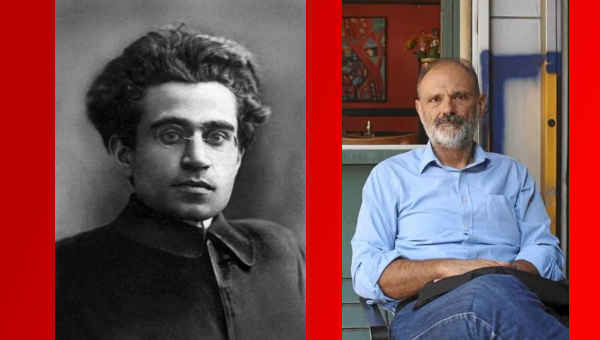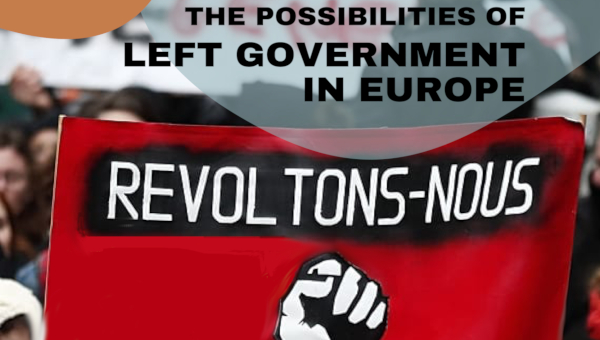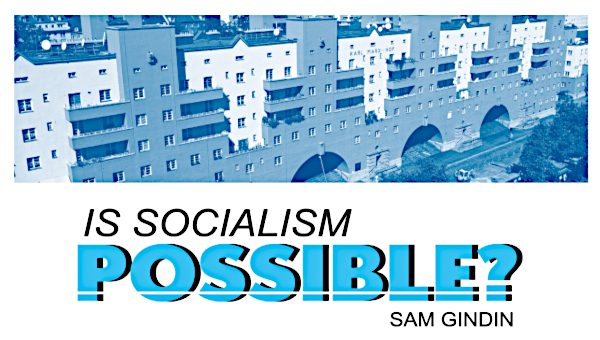Capitalism and Community: The Tragedy of Atomism
Given that the immanent drive and constant tendency of capital is to atomize the working class, what are the effects of this tendency? For the atomized worker, all other workers are competitors; all other workers are enemies in so far as they are competing for the same jobs. All other workers potentially stand between them and the satisfaction of their needs.
Atomized workers may see a logic in joining together with others in the same situation against a “greater enemy,” perhaps against workers of other races and ethnicities. Further, in seeking “their immediate, everyday interests,” they may even identify their interests with those of their capitalist employers. As Engels pointed out, the atomization of workers “restricts the workers to seeing their interest in that of their employers, thus making every single section of workers into an auxiliary army for the class employing them.” For example, “The factory worker lets himself be used by the factory owner in the agitation for protective tariffs.”1 The basis for viewing workers from different countries as the enemy is obvious.
Underlying all the behavior of the wage-labourers within capitalism is that they do not have an alternative means by which to maintain themselves except by selling their labour-power. Accordingly, for the atomized worker, the “workers’ dilemma” within capitalism becomes “do I take a job for lower wages and longer and more intense working conditions or does someone else get it?” Preventing the cooperation of workers is their “division and dispersal,“ which, Engels commented, “renders it impossible for them to realise that their interests are common, to reach understanding, to constitute themselves into one class.”2
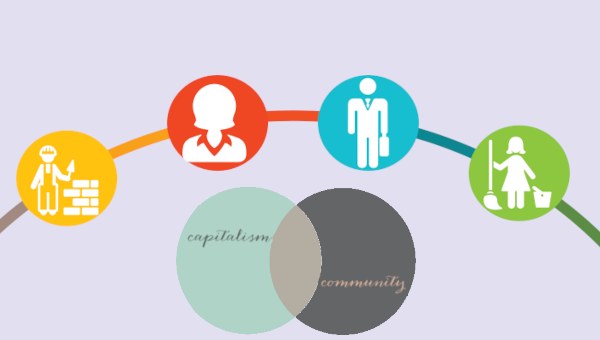
Homo Economicus
Left to “isolated, individual bargaining,“ the atomistic wage-labourer thus acts like the homo economicus of neoclassical theory, calculating pleasure and pain (as transmitted by price) and considering only that which is rational for him or her as an individual. This is one way in which the real atomism of wage-labourers (which capital strives to produce and reproduce) is reflected in neoclassical theory. Also present is the real counterpart of the logical fallacy of composition: each individual worker attempts to advance his or her individual interest, as if what is true for that worker is all that matters; the result, as the General Council of the First International declared, is that workers as a whole lose.
This is the tragedy of atomism, which is familiar to some in the garb of the so-called “tragedy of the commons.” As is well known, the latter is intended as a cautionary tale to explain why common property theoretically leads to disaster. Thinking that if I don’t take advantage someone else will, each individual peasant chooses to graze an additional animal on the common fields, and the result is destruction of the quality of the land. The preferred solution for the advocates of this tale is private ownership of the resource in question so that the self-interest of each individual owner is to preserve and improve its productivity (in the case of the parable, the land, but also, among other resources, the buffalo herd, whales, fish, and presumably water and air). However, the focus upon the commons misidentifies and thus masks the tragedy. Rather than from common property, the concept of the tragedy of atomism reveals that the destruction of human beings and nature has its roots in particular social relations.
While the concept of the tragedy of atomism theoretically challenges the so-called tragedy of the commons, the latter has been refuted concretely by the history of communities with respect to common property. Focusing in particular on the experience with natural resources to which all members of a community have access (fisheries, irrigation systems, forests, and the like), many studies have stressed the norms, conventions, and working rules by which such communities, (for example, indigenous communities,) have successfully managed the commons.3
The key is the existence of communal institutions, formal or informal arrangements by which common property is monitored and respected. As Elinor Ostrom and others who have worked on the question of common property have explained, the absence of a community determined and able to monitor the utilization of the commons turns the latter into “open-access property.” It means that there are no constraints upon atomistic behaviour in which individuals, from inside or outside, act as if their private interests are isolated from one another. The result is excess grazing, fishing, hunting, land-clearing, chemical-fertilizing, mineral-extracting, carbon-emitting, water-using – excess relative to what Marx called “the whole gamut of permanent conditions of life required by the chain of human generations.”4
Consistent with neoclassical theory, some communities avoid the tragedy of atomism by introducing sanctions and fines for violations of the interest of the whole; however, the constraint characteristic in many communities flows from the existence of norms with respect to fairness and appropriate behavior and morals. In contrast to the anonymous actors who populate neoclassical theory, individuals in these communities “have shared a past and expect to share a future. It is important,” Elinor Ostrom accordingly notes, “for individuals to maintain their reputations as reliable members of the community.”5 In short, rather than a “connection of mutually indifferent persons,“ the links of people in such cases go beyond the atomistic premises of homo economicus.6 Implicit here is a conception of fairness that goes beyond the results of markets.
“Fairness” and Experimental Economics
The concept of fairness (and, thus, unfairness) can be a real moment of economic life. As E. P. Thompson revealed in his classic article, “The Moral Economy of the English Crowd in the Eighteenth Century,” the food riots of that period reflected a broad and passionate consensus that price increases were unfair and unjust.7 Similarly, James Scott, in his work on “the moral economy of the peasant,” focused upon the notion of economic justice among peasants and pointed to revolts and rebellions that erupted when notions of fairness were violated.8 As I discussed in “The Concept of ‘Fairness’: Possibilities, Limitations, Possibilities,“ there were also protests and various forms of resistance within “real socialism” on the part of workers when what they considered to be tacit social contracts and existing norms were violated.9
The underlying concept here is one of an equilibrium, a concept that Thompson employed explicitly in talking about “a particular set of social relations, a particular equilibrium between paternalist authority and the crowd.”10 When that equilibrium is disturbed, there can be a feedback mechanism in which masses (peasants, the crowd, workers) react to restore the previous conditions. That was precisely what Marx described in Value, Price and Profit, where he pointed out that 99 percent of wage struggles followed changes that had produced falling wages. “In one word,” he noted, they were “reactions of labour against the previous action of capital” and were an attempt to restore the “traditional standard of life” that was under attack.11 The spontaneous impulse of workers was to struggle for “fairness” against the violations of existing norms, indeed, to fight a guerilla war against effects initiated by capital. The explicit goal of workers was to struggle for “a fair day’s wage for a fair day’s work.”
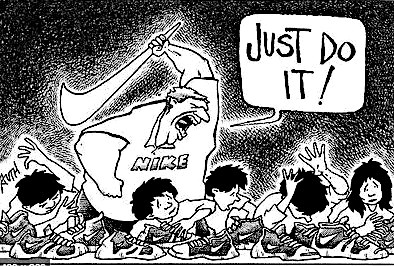
This, as Marx pointed out, was a “conservative demand,” an attempt to turn the clock back.12 Rather than a call for an end to exploitation, it is the demand for the fair exploitation of the past. Indeed, the standard of fairness in much of what has been called “moral economy” involves looking backward to a better time. Is there not, though, a concept of fairness (and unfairness) that can lead in a revolutionary direction?
In recent years, the subject of fairness has surfaced in mainstream economics as the result of questions posed by experimental and behavioural economists about the neoclassical assumption of homo economicus. Through extensive empirical studies of select groups, supported by real life experiences, these economists and psychologists have concluded that predictions of that model are regularly falsified by the behaviour of real subjects. Contrary to the premise that rational individuals by definition always act to maximize their personal self-interest, these writers argue that concepts of fairness are part of the preference functions of individuals and, accordingly, they act differently from homo economicus.
For example, Kahneman, Knetsch, and Thaler argue that the “Ultimatum Game,“ where one individual offers a particular division of a sum to a second individual on a “take-it-or leave it basis” (“leave it” meaning that neither gets any part of that sum), reveals that people’s preferences for being treated fairly and for treating others fairly lead them to act contrary to theoretical predictions. According to the theory, the first party (the allocator) rationally will offer as little above zero as possible and the second (the recipient) will accept this offer (ultimatum) rather than get nothing.13 In this exercise, however, a clear pattern emerges: the recipients often tend to reject any offer that they don’t consider fair even though this means they would get nothing, and the allocators often make an offer well above zero, and sometimes an equal division, rather than make a blatantly unfair offer.
An apparent preference for fairness is also demonstrated when those surveyed via telephone interviews and classroom tests consider a scenario in which an employer or landlord takes advantage of changing market conditions to alter an existing agreement, (for example, raise rents or lower wages). Respondents tend to view such actions as unfair, except in the case where the employer/landlord himself faces additional costs. In contrast, new contracts with new parties that reflect those new conditions are viewed as fair. What leads the survey subjects to view the latter case as fair? The unstated premise is that the market yields fair results; as for the former case, the presumed unfairness flows from the violation of the implicit contract in a “reference transaction” that which occurred under previous (and fair) market conditions.
Of course, the limited information these atomistic subjects are provided surely reflects their particular judgements as to fairness. If, for instance, they were informed that workers were super-exploited (in the reference transaction) as the result of racism and sexism, would they still conclude that it is fair for the employer to lower wages if his raw material costs rise? As Kahneman, Knetsch, and Thaler admit, justice is not to be confused with this conception of fairness: “The reference transaction provides a basis for fairness judgments because it is normal, not necessarily because it is just” and “Terms of exchange that are initially seen as unfair may in time acquire the status of a reference transaction.”14 As in the “moral economy” examples cited above, the concept of fairness here involves looking backward. In short, super-exploitation may come in time to be viewed as “self-evident natural laws.”
Although the particular judgements of these survey respondents certainly may be questioned, a concept of fairness clearly appears to be part of their preference function. For Kahneman, Knetsch, and Thaler, incorporation of fairness enriches the standard model and helps to explain what appear to be anomalies for the model of homo economicus.15 But does it challenge the standard neoclassical model? Fairness simply becomes here an additional element in the determination of the optimal position of atomistic individuals. A more realistic homo economicus that permits better predictions, perhaps, but still the same model.
Yet, some behavioural economics studies point in a quite different direction, alerting us to contradictions between the self-interest characteristic of homo economicus and matters of fairness, morals, or what economist Sam Bowles calls “social preferences.” In his book, The Moral Economy, Bowles defines social preferences as encompassing “motives such as altruism, reciprocity, intrinsic pleasure in helping others, aversion to inequity, ethical commitment, and other motives that induce people to help others more than is consistent with maximizing their own wealth or material payoff.”16 Not only do many studies demonstrate that self-interest and social preferences coexist, but they also reveal particular characteristics of their interaction. Bowles illustrates this phenomenon at the outset of his book:
“In Haifa, at six day care centers, a fine was imposed on parents who were late in picking up their children at the end of the day. It did not work. Parents responded to the fine by doubling the fraction of time they arrived late. After twelve weeks, the fine was revoked, but the parents’ enhanced tardiness persisted.”17
Similarly, Bowles notes that Boston firemen responded to penalties for going over a limit for their sick days by substantially increasing the sick days they claimed and ultimately taking more than twice as many in the next year. Further, he points out that attempts to shorten hospital stays in Norway by imposing fines had the opposite effect. Contrary, then, to the predictions as to how homo economicus acts, the effect of monetary incentives in these cases appears counterintuitive.
But Bowles’s point is that they are not anomalies. When you introduce concrete rewards or penalties where they are not hitherto present, something is occurring that the theory of homo economicus is not capturing. We can see that, too, in experiments with children who are offered a reward for doing what they were happy to do without the reward; for example, in the case of children happy to help an adult retrieve a lost object, with the introduction of a reward “the helping rate fell off by 40 percent%.” In another case where children enjoyed drawing, those who accepted the idea of rewards reduced their decision to choose drawing in the course of time.18
We can identify two takeaways from these examples, and from the many experiments that Bowles reports. First, “incentives crowd out social preferences.” We can not assume, as the literature on homo economicus does, the compartmentalization or separation of the two spheres. Rather, “incentives and social preferences are substitutes: the effect of each on the targeted activity declines as the level of the other increases.”19 Thus, the fine for tardiness at the childcare center “appears to have undermined the parents’ sense of ethical obligation to avoid inconveniencing the teachers, leading them to think of lateness as just another commodity they could purchase,” and the fines placed on the Boston firemen went counter to their pride in serving the public.20
The second take-away from Bowles’s review of the various studies demonstrates the importance of the second product. Our emphasis upon the second product predicts that acting in response to material incentives tends to produce a different person than one who acts in accordance with social preferences. And, that is precisely the lesson stressed by Bowles. Considering the long-term effects of material incentives, Bowles argues that “the economy is a great teacher, and its lessons are neither fleeting nor confined within its boundaries.” Material incentives, he proposes, may “affect the long-term learning process whose results persist over decades, even entire lifetime.”; Indeed, “the incentive alters the long term, not easily reversed preference-learning process.” Very simply, “economies structured by differing incentives are likely to produce people with differing preferences,” or, as Bowles declares in his a subheading, “The Economy Produces People.”21
What kinds of people are produced by the use of material incentives? Exactly what you would expect as the result of what Bowles calls “the corrosive effect of markets and incentives on social preferences.”22 Not only do incentives “crowd out” social preferences in the short run, but they also “constitute part of a learning environment in which preferences are durably modified.”23 More than mere substitutes for social preferences, material incentives shape people. As a result, the people produced by markets and incentives are substitutes for people characterized by motives such as altruism, opposition to inequity, and intrinsic pleasure in helping others. How Bowles feels about this is clear from the subtitle of his book: “Why Good Incentives Are No Substitute for Good Citizens.”
Nevertheless, despite his own obvious social preferences, Bowles sees the necessity to utilize material incentives in the hope of achieving desirable goals. Perhaps because of his understanding of how markets and material incentives have already shaped the preferences of people within capitalism, his purpose is to stress the importance of developing “public policies that would allow incentives and constraints to work synergistically rather than at cross purposes with peoples’ ethical and other-regarding dispositions.”24 Rather than compromising the “ethical and other-regarding motives that are essential to a well-governed society,” Bowles hopes for the development of a mechanism design that would include “a wise combination of positive incentives and punishments with moral lessons.”25 Combining incentives and social preferences in a way that fosters the latter would be for him the best of all possible worlds.
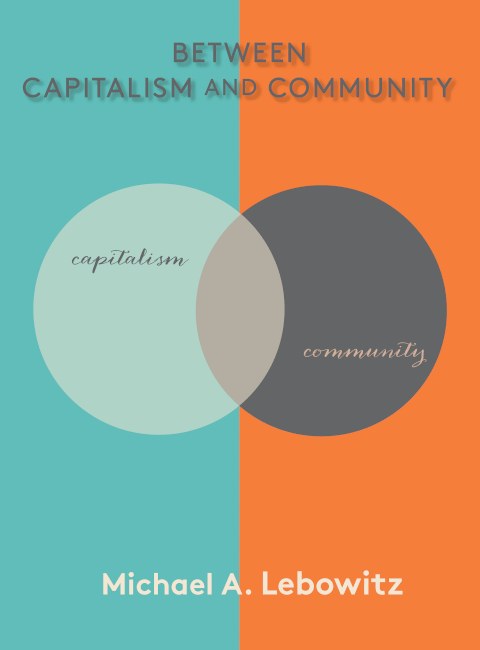
Having identified the essential contradiction between material incentives and social preferences, however, it is not enough to search for the golden mean, (the “wise combination”) that can dampen that contradiction and that can offer an incremental feasible path toward a society that would produce better people. We can’t stop there. If material incentives and social preferences are so obviously in opposition, it is because they are elements of two different organic systems. Analytically, we need to go beneath the surface to understand those systems that not only coexist but also interpenetrate and mutually deform each other.
Capitalism and Community
Material incentives are common sense in a system that starts from a relation of separated atomistic self-seekers, a system based not upon “the association of man with man, but on the separation of man from man.”26 What brings these “mutually indifferent persons” together, “putting them in relation with each other, is the selfishness, and the private interest of each. Each pays heed to himself only, and no one worries about the others.”27 Such atomistic self-seekers and their connection, the market, are “historic premises” of capitalism. Central to capitalism, however, is that it produces and reproduces a particular atomism, that of workers, as its premise.28
Consider our discussion in chapter 3 of capitalism as an organic system. Once capital has developed upon its own foundation (once “it is itself presupposed, and proceeds from itself to create the conditions of its maintenance and growth”), it produces its own premises in their “bourgeois economic form.”29 Commodities, money, markets, labour-power as a commodity, and the separation of workers are produced and reproduced as are the seemingly independent self-seekers who respond to the compulsion of the market, which is “external to the individuals and independent of them.” That apparent external compulsion, which ensures the reproduction of capitalism as an organic system, is precisely why Marx stressed the importance of the “sacred” law of supply and demand in maintaining the despotism of capital and why he identified the political economy of capital as grounded in “the blind rule of the supply and demand laws.”
Let us consider, on the other hand, the system that produces individuals who collectively are guided by “motives such as altruism, reciprocity, intrinsic pleasure in helping others, aversion to inequity, ethical commitment, and other motives that induce people to help others.” In contrast to a concept of fairness that rests upon the market and only rejects as unfair those violations of existing norms developed as the result of the interactions of atomistic actors, focus upon social preferences implies the view that selfishness, inequality, and insensitivity to the needs of others are unfair and unjust behaviour for people within society. We are pointing here to an alternative organic system in which social preferences are common sense. As Ostrom indicated, in a system based explicitly upon the association of people, people take pride in being viewed “as reliable members of the community.” Whether labelled the solidarian society, the solidarity economy, the communal society or communism, the starting point of this system is community, the recognition of the needs of others within society.30
Begin with communality, Marx proposed, and “instead of a division of labour, … there would take place an organization of labour.” There, the producers, “working with the means of production held in common,“ combine their capacities “in full self-awareness as one single social labour force.”31 In this system, Marx explained in the Grundrisse, “communal production, communality, is presupposed as the basis of production,“ and the activities undertaken by the associated producers are “determined by communal needs and communal purposes.”32 In short, here the producers have informed themselves of their common interests and accordingly “act in common.”
In this system of communality, rather than “the blind rule of the supply and demand laws” inherent in the atomism of producers, we see the realization of “the political economy of the working class,” which is – “social production controlled by social foresight.” Production for social needs, organized by associated workers, based upon social ownership of the means of production (three sides of what Hugo Chavez called “the elementary triangle of socialism”) are parts of an organic system, a “structure in which all the elements coexist simultaneously and support one another.” It is a system of reproduction whose results are premises of the system as “is the case with every organic system.”33
One of the essential products of this system is a particular type of human being characterized by “solidarity, cooperation, care, reciprocity, mutualism, altruism, compassion, and love.”34 Homo solidaricus (as named by Emily Kawano) develops her capacities by relating to others out of solidarity. If I produce consciously for your need, the young Marx commented, I know my work is valuable: “in my individual activity,” he proposed, “I would have directly confirmed and realised my true nature, my human nature, my communal nature.” Thus, the second product of our activity in communal society is the development of rich human beings who realize themselves by consciously producing for others.35 With “free exchange among individuals who are associated on the basis of common appropriation and control of the means of production,” Marx envisioned the production of “free individuality, based on the universal development of individuals and on their subordination of their communal, social productivity as their social wealth.”36
Two organic systems. Each is separate and compartmentalized. Each produces a particular type of human being. Actually- existing capitalism contains elements of both systems, and that poses the question of how they interact. Bowles recognizes that incentives and social preferences are substitutes, that they tend to “crowd out” each other and that the people produced by each are substitutes. Given his chosen audience, he seeks to convince the wise legislator to search for the mechanism that will produce the most salutary combination of the two motives. But that does not abolish the contradictions between the two systems.
Capital, we know, is constantly attempting to separate producers in order to weaken them. It gains always by turning workers against each other and to see each other as competitors, as usurpers, as threats, as enemies. It does whatever it can to foster atomism and to turn everything into market relations; capital’s goal in this respect is complete commodification, what Marx described as a “time when everything, moral or physical, having become a marketable value, is brought to the market,“ a time of “universal venality.”37 Capital, in short, constantly drives to crowd out all traces of the system of community. To think that a wise mechanism design is sufficient to withstand this impulse is utopianism.
Material incentive versus social preferences, atomism versus community, separation versus solidarity, homo economicus versus homo solidaricus, the political economy of capital versus the political economy of the working class – these are sides of the class struggle within existing capitalism.38 Rather than hoping for “a wise combination” of each, the wise revolutionary understands that it is essential to struggle by all means possible to defeat capitalism, to decommodify everything, to build the system of community where producers act in common. And, simultaneously in that process, how they produce themselves as the working class the system of community needs. •
This essay is an essay excerpt from his book Between Capitalism and Community.
Endnotes
- Frederick Engels, “The Constitutional Question in Germany” (1847), in Marx and Engels, Collected Works, Volume 6 (New York, International Publishers, 1976), 83–84.
- Engels, “The Constitutional Question in Germany,” Ibid.
- For example, see Elinor Ostrom, Governing the Commons: The Evolution of Institutions for Collective Action (Cambridge: Cambridge University Press, 1990); and Daniel W. Bromley, ed., Making the Commons Work: Theory, Practice, Policy (San Francisco: ICS Press, 1992).
- Marx, Capital, Vol.3:, 754n. See Lebowitz, The Socialist Imperative, 22–26, 32–34, esp. The Socialist Alternative, in particular, “Expanding the Commons,” 146–48. and Lebowitz, The Socialist Imperative, 22–6, 32–4.
- Ostrom, Governing the Commons, 88.
- Lebowitz, The Socialist Alternative, 66–68; Lebowitz, The Socialist Imperative, 26–27. Cf.See also Marx, Grundrisse, 158, 171–72.
- E. P. Thompson, “The Moral Economy of the English Crowd in the Eighteenth Century,” Past and Present 50 (1971).
- James C. Scott, The Moral Economy of the Peasant: Rebellion and Subsistence in Southeast Asia (New Haven: Yale University Press, 1976), 4–5, 7.
- Chapter 9 in Lebowitz, The Socialist Imperative, chap. 9.
- Thompson, “The Moral Economy of the English Crowd in the Eighteenth Century,” 129.
- Marx, Value, Price and Profit, 143–45.
- Marx, Value, Price and Profit, Ibid., 148–49.
- Daniel Kahneman, Daniel; Jack L. Knetsch, Jack L; and Thaler, Richard H. Thaler, “Fairness and the Assumptions of Economics,“ Journal of Business, Vol. 59/4, No. 4 (October 1986).
- Daniel Kahneman, Jack L. Knetsch, Richard H. Thaler, Kahneman, Daniel; Knetsch, Jack. L; Thaler, Richard, “Fairness as a Constraint on Profit Seeking: Entitlements in the Market,:” American Economic Review, Vol. 76/4, No. 4 (September 1986), 730–31.
- Kahneman, Daniel; Knetsch, Jack. L; Thaler, Richard, “Fairness and the Assumptions of Economics,“ S299.
- Samuel Bowles, The Moral Economy: Why Good Incentives are no Substitute for Good Citizens (New Haven: Yale University Press, 2016).
- Bowles, The Moral Economy, Ibid., 4. Bowles refers to 51 studies, involving 26,000 subjects in 36 countries.
- Ibid., Bowles, The Moral Economy, 5, 9, 98–9.
- Ibid., Bowles, The Moral Economy, 50.
- Ibid., Bowles, The Moral Economy, 5, 9–10.
- Ibid., Bowles, The Moral Economy, 115–18.
- Ibid., Bowles, The Moral Economy, 111.
- Ibid., Bowles, The Moral Economy, 122. Note that his arguments about the corrosive effects of markets and material incentives upon people are not specific to capitalism but would apply as well to market socialism and, in general, to societies trying to build socialism using material incentives.
- Ibid., Bowles, The Moral Economy, 150.
- Ibid., Bowles, The Moral Economy, 221.
- See the discussion of separated producers in chapter 3, “The Solidarian Society,” in Lebowitz, The Socialist Alternative.
- Marx, Capital, Vol. I: 1; 280.
- Only in capitalism does everything have a price, (including, Marx mocked, “virtue, love, conviction, knowledge, conscience, etc.”). Karl Marx, The Poverty of Philosophy, 113.
- Marx, Grundrisse, 278, 459–60.
- In contrast to “communism,“ designation as “community” highlights relations among people.
- Marx, Grundrisse, 172; Marx, Capital, Vol. I, 1:171.
- Marx, Grundrisse, 171–72.
- Lebowitz, The Socialist Alternative, 85–89; Marx, Grundrisse, 278.
- Emily Kawano, Solidarity Economy: Building an Economy for People & Planet.
- Marx, “Comments on James Mill,” in Marx and Engels, Collected Works, vol. 3 (New York: International Publishers, 1975), 227–28; Karl Marx, Economic and Philosophical Manuscripts of 1844, 302, 304.
- Lebowitz, The Socialist Alternative, 78–81; Marx, Grundrisse, 158–59.
- Marx, The Poverty of Philosophy;, Marx and Engels, Collected Works, vol. 6, 113. Note that Bowles cites this discussion in, Bowles, The Moral Economy, 113.
- Marx’s Critique of the Gotha Programme should be understood in this context. See chapter 2, “Understanding the Critique of the Gotha Programme,” in Lebowitz, The Socialist Imperative: From Gotha to Now.


